The Stitch & Glue method
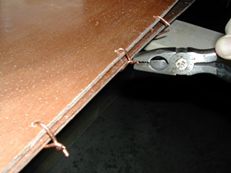 This method was initially developed using
This method was initially developed using
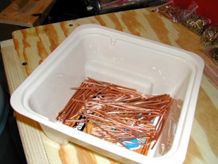 Unlike other construction techniques of the day (like clinker and carvel) which required specialist skills and tools, Stitch & Glue kits were claimed to put boat-building within the reach of even teenagers to build, and despite the boat actually being quite complex internally, this Mirror Dinghy is now arguably the most successful 2-person dinghy in the world with over 70,000 examples ! (Footnote: The Mirror Mk 3 now has a Bermudan rig instead of the original sliding gunter and the newest models are now built in composite with a foam core).
Unlike other construction techniques of the day (like clinker and carvel) which required specialist skills and tools, Stitch & Glue kits were claimed to put boat-building within the reach of even teenagers to build, and despite the boat actually being quite complex internally, this Mirror Dinghy is now arguably the most successful 2-person dinghy in the world with over 70,000 examples ! (Footnote: The Mirror Mk 3 now has a Bermudan rig instead of the original sliding gunter and the newest models are now built in composite with a foam core).
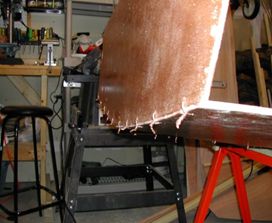 In the United
In the United
Because the Mirror dinghy made the system so well known, I will use it here to show various steps in the method.
First, one needs to cut suitable copper wire into lengths to suit the plywood thickness. Typically about 2.5” to 3” long.
Then, if it’s possible to lay adjacent panels together, drill through both panels at the edge, (but not too close or the plywood will break!) Initially, the wire loop should be set up very loose, so that it not too tight to open up the panels. Once in position, the wires can be tightened before the joint is bonded.
Here are the bottom panels of a Mirror Dinghy being wired up to the transom.
Here is the
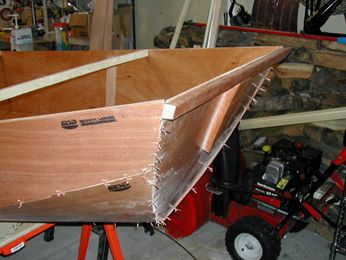 And below is the whole external hull all wired up. As the boat is very flexible at this stage, it’s important to support it with bow and stern aligned parallel to each other in a horizontal plane with transoms square to the centerline, before starting to fill and tape the joints …, typically starting on the inside before flipping the boat to finish off the exterior. Most of the twisted wire is clipped off and the rest pushed into the gap before filling, rounding off and taping.
And below is the whole external hull all wired up. As the boat is very flexible at this stage, it’s important to support it with bow and stern aligned parallel to each other in a horizontal plane with transoms square to the centerline, before starting to fill and tape the joints …, typically starting on the inside before flipping the boat to finish off the exterior. Most of the twisted wire is clipped off and the rest pushed into the gap before filling, rounding off and taping.
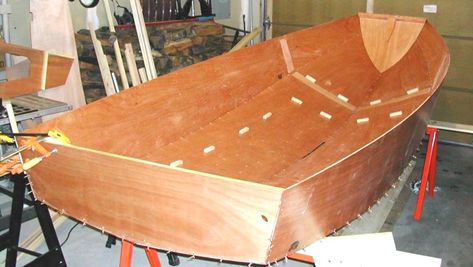 Although this all looks very easy (and it is), there are still a lot of holes to make and the wires need to be compacted against the plywood as much as possible .. or the plywood ‘tacked’ together with filled epoxy and then the wires pulled out and holes filled before completing the joint. And particularly in the case of the Mirror Dinghy, most of the hull work is still to be done as the internals are complex, with many bulkheads, tanks
Although this all looks very easy (and it is), there are still a lot of holes to make and the wires need to be compacted against the plywood as much as possible .. or the plywood ‘tacked’ together with filled epoxy and then the wires pulled out and holes filled before completing the joint. And particularly in the case of the Mirror Dinghy, most of the hull work is still to be done as the internals are complex, with many bulkheads, tanks
The white blocks are for guidance when setting in the internal seats & bulkheads.
Recent versions of Stitch & Glue now often use nylon ties that are lighter, do not require twisting and their flat section allows the parts to be opened more easily with less damage to the plywood. However, the system still requires holes and additional work to prepare the joint for laying on the cloth tape in a smooth manner. While this system still works best for multi-chine designs with very open angles, the ABC System can avoid the holes and
See: ABC System
"New articles, comments
"See the Copyright Information & Legal Disclaimer page for copyright info and use of ANY part of this text or article"


